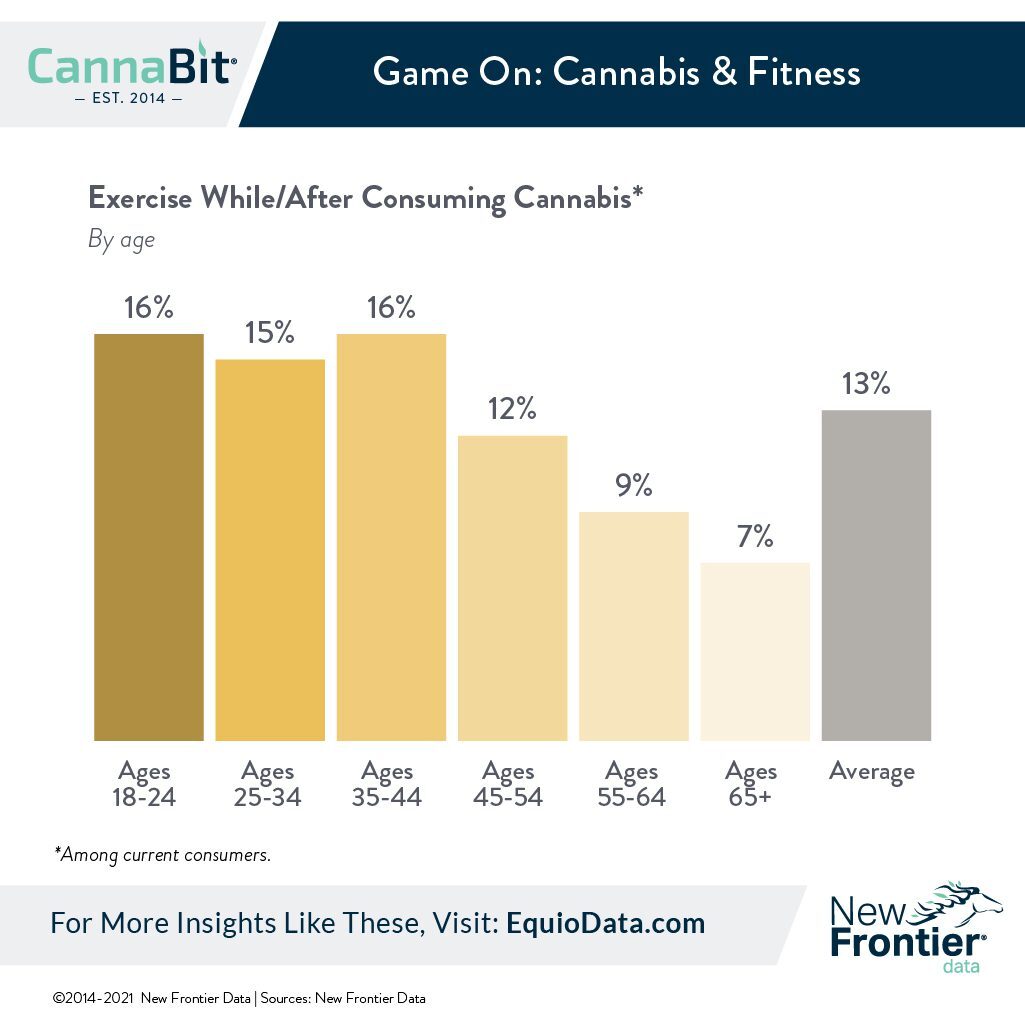No Slacking: How Cannabis Consumers Are Pursuing Health and Wellness

47% of U.S. Cannabis Consumers Report Choosing Cannabis Products over Alcohol
October 13, 2021
An Update on Canada’s Legal Cannabis Industry
October 25, 2021By Dr. Molly McCann, Ed.D., Director of Industry Analytics, New Frontier Data
New Frontier Data’s latest report, Cannabis & Wellness: A New Consumer Paradigm, examines cannabis consumers’ behaviors associated with health and wellness. Last week’s blog discussed the role of cannabis in efforts to reduce a consumer’s alcohol use; this week’s topic examines consumers’ use of cannabis for wellness and fitness.
The longstanding, prohibition-era stereotype of an unhealthy, sedentary stoner is being increasingly challenged as more consumers become open about the ways they use cannabis. Last April, a study in the Harm Reduction Journal found through analysis of accelerometer data that frequent cannabis consumers typically engage in more physical activity than do people who were not consumers. The NBA recently announced that it again this season will not test its players for cannabis use, noting its popularity among players seeking recovery and pain relief.
New Frontier Data has found that 8% of consumers cite improving exercise/fitness training as a specific reason for using cannabis, while an even larger share of consumers (13%) regularly use cannabis before exercising. Overall, 16% of consumers under age 45 incorporated cannabis in their workouts.
While consumers under 45 reported being most likely to combine exercise and cannabis use, consumers across all ages found that cannabis improved their fitness practices, if for different reasons at different ages. Consumers under 35 were more likely than were older cohorts to report using cannabis in conjunction with a workout to enhance enjoyment. Boosting motivation was another common reason reported for using cannabis to exercise, particularly among those under age 54. After age 35, relaxation reportedly becomes a prominent fitness-specific reason for using cannabis, and among consumers 55 and older, cannabis use serves to reduce exercise-related soreness.
While fitness-related reasons for cannabis use do not differ significantly between genders, the types of those activities do. Among men, weightlifting was the activity most commonly incorporating cannabis use, while among women it was yoga or Pilates. Hiking and running were the next most cited cannabis-driven fitness activities for both genders.
Continued product diversification will present consumers with an increasingly broader array of uses for which they can integrate cannabis into fitness and broader wellness practices. Within the category of consumption to enhance physical activity, there is a wide range of different use cases which vary between individuals. Each of those presents an opportunity for specific effect-based or situationally driven products and brands. Through continued social normalization and reduction of stigma associated with cannabis use, consumers will increasingly enjoy flexibility to use cannabis in ways aligned with their wellness objectives.




